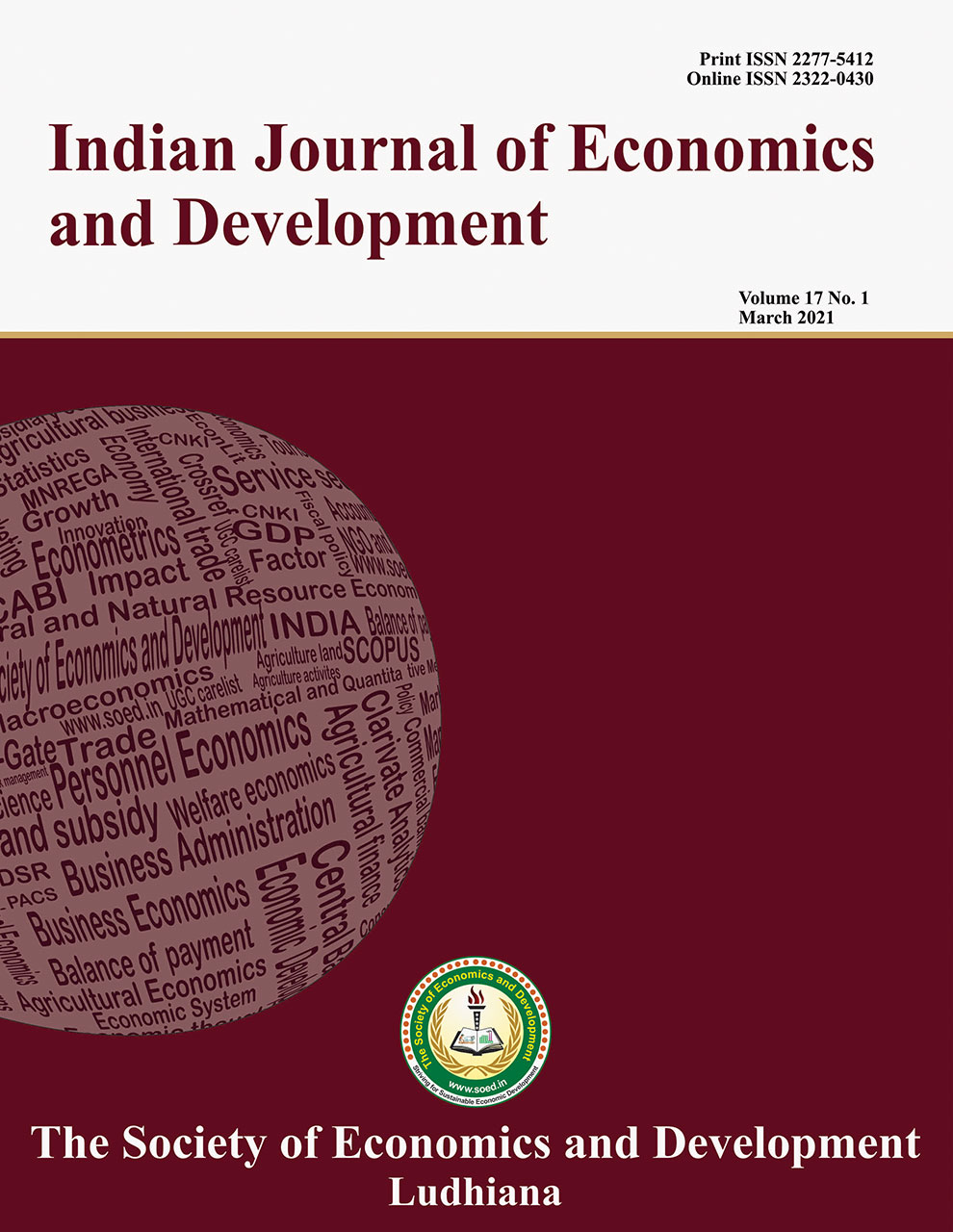Progress and Performance of Protected Cultivation in Maharashtra

Price: ₹ 500
Author: P. Prakash1*, Pramod Kumar2, Amit Kar2, Awani Kumar Singh2 and P. Anbukkani3
Author Address: Scientist, ICAR-Central Tuber Crops Research Institute, Kerala- 695017, 2Principal Scientists and 3Scientist, Division of Agricultural Economics, ICAR-Indian Agricultural Research Institute, New Delhi-110012
Keywords: Compound annual growth rate, protected cultivation.
JEL Codes: Q10, Q13, Q14, Q16.
Abstract
This study was undertaken to examine the status and performance of various governmental schemes facilitating protected cultivation of horticultural crops in India and particularly Maharashtra. It was observed that the cumulative area achieved under protected cultivation by NHM in India during 2005-06 to 2017-18 was estimated to be 2.15 lakhs ha while the area brought under protected cultivation by Maharashtra was nearly about 0.16 lakh ha which accounted for 7.4percentof the total area under protected cultivation in India. The performance of NHM programme in Maharashtra showed that about 2811 farmers benefited with an average subsidy of 4.86 lakhs for establishing greenhouse. In case of shade net house about 3364 farmers were benefited with an average subsidy of 2.5 lakhs. Among eight divisions, Pune division accounted a share of 34 and 33percent among the total area in case of greenhouse and shade net house respectively. The state made significant progress in the horticulture sector with the use of the funds under the NHM programme. However, the performance of these schemes was uniform across regions but it was slow down. Thus, it was suggested that the efforts need to be made by the government to enhance the performance of schemes facilitating protected cultivation in order to have a larger impact.
Description
Indian Journal of Economics and Development
Volume 15 No. 4, 2019, 555-563
DOI: 10.5958/2322-0430.2019.00071.4
Indexed in Clarivate Analytics (ESCI) of WoS
P. Prakash1*, Pramod Kumar2, Amit Kar2, Awani Kumar Singh2 and P. Anbukkani3
1Scientist, ICAR-Central Tuber Crops Research Institute, Kerala- 695017, 2Principal Scientists and
3Scientist, Division of Agricultural Economics, ICAR-Indian Agricultural Research Institute, New Delhi-110012
*Corresponding author’s email: prakashiari@yahoo.com



